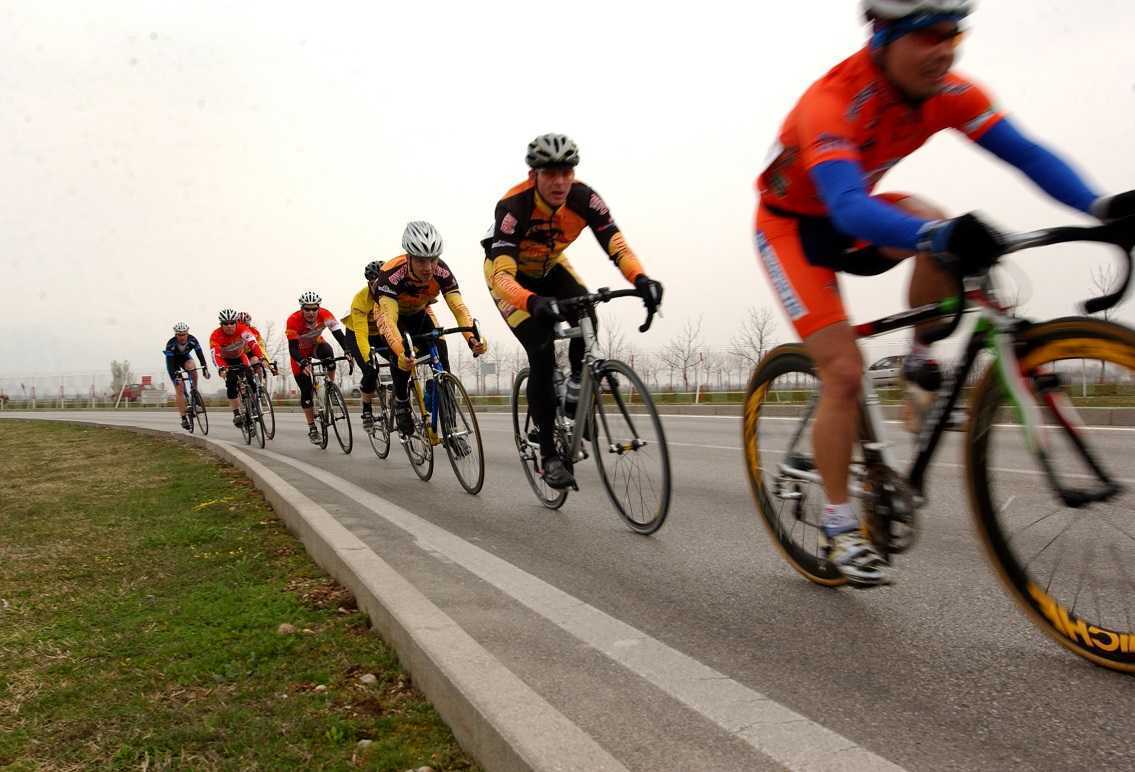Patients and practitioners alike can benefit from meditation and mindfulness training for the rehabilitation setting. Nari Clemons joined us today to discuss her upcoming Meditation for Patients and Practitioners course taking place in New York.

We all live in a fast paced world. Our smart phones are letting us know to get back to people with email or texts, we have busy practices with full days, and many of us also have care-giving to do when we get home. Many practitioners see chronic pain patients, sometimes with abuse history or a history of many years of failed medical care. Our patients come to us stressed out and ready to unload, and this happens all day long.
We know our pelvic patients would do better to calm their system. We go home at night so drained sometimes. We would do better to regulate our system. But how? We are all so busy. In Meditation for Patients and Practitioners, we focus on the therapist as well as the patient.
Perhaps you have tried meditation for yourself or your patient. Perhaps you didn’t respond to imagining a waterfall or counting your breath, and you gave up. Perhaps your patient didn’t really take to it, or you can’t figure out how to fit it into your sessions. So many of us know that we are tired of our own low level anxiety, or that our patients would do better if we could get them to re-frame mentally. However, when it comes to implementing those changes, we often come up at a loss.
A randomized control study[1] of nurse leaders who work in understaffed environments were tested with a workplace meditation program. Stress scores were tested at baseline and one week after completing a 4 week program. What do you know? The participants had a decrease in distress scores and an increase in positive symptoms.
“But my day is too busy,” you think? In this course, we work on strategies to center yourself at the beginning of your day, the end of your day, or during your day with 1, 2, or 5 minute strategies. This way, even on your busiest days, you have a way to reel in your stress level and find your calm. For your patients, we offer around 10 different techniques.
When teaching PF1, PF2A and PF2B, we talk about the need to downtrain the nervous system to be effective with pelvic pain, constipation, and history of trauma. Yet, the question always arises about which technique to use with a patient. In the Meditation for Patients and Providers course we give you a working model of how to choose a technique for your patient depending on the time you have, the patient personality, and the situation you are working on resolving.
As one participant said after the last course, “Excellent course. No other course has so beautifully described such practical techniques that are just as important for the therapist’s mental health as they are for the patient’s”. Sound exciting? Join us at the Meditation for Patients and Practitioners course being offered July 19-20 in New York City.
[1]Bazarko, Dawn et al. “The Impact of an Innovative Mindfulness-Based Stress Reduction Program on the Health and Well-Being of Nurses Employed in a Corporate Setting." Journal of Workplace Behavioral Health 28.2 (2013): 107–133. PMC. Web. 2 June 2015.

The Pelvic Rehab Report recently caught up with Katie Woolf, DPT, in order to hear a bit about her recent experience at H&W's Pudendal Neuralgia course in Salt Lake City. The Pudendal Neuralgia course was developed and is instructed by faculty members Loretta Robertson and Tracy Sher. Katie had this to say about her experience in the course:
I recently attended the Pudendal Neuralgia course in Salt Lake City, Ut. It was a fabulous experience! The instructors were Tracy and Lorretta. They are such darling ladies. They have a contagious passion and endless knowledge of pelvic rehabilitation. This was my second Herman and Wallace course and I have never been disappointed. The facilities for the course were perfect as well.
This course opened my eyes to pelvic pain, pudendal neuralgia (PN), pelvic dysfunction, and how to recognize and manage it. The instructors gave an evidence based practice review and personal testimony of PN and how they treat patients with PN. The instructors were knowledgeable about anatomy, treatment interventions, and surgical interventions for to PN. Most of all they made it a fun course.
The course was well organized and gave great examples of how to interact with your patients about their pain and recovery. The course allowed for us professionals to network and learn from each other. It was interactive and thorough. I felt like every detail of PN was covered.
I have often been intimidated to treat pelvic dysfunction but after this course I discovered it’s just like treating any other diagnosis, “just down stairs.” The course was taught at a level I understood and could apply. I feel empowered to take my knowledge and become a better physical therapist. Tracy and Loretta instilled confidence in me that I can treat patients with PN and pelvic pain. It’s only been a few days but, I have already changed the way I interact with patients because of this course (although I haven't seen a patient with PN yet). I would highly recommend any of the Herman and Wallace courses to anyone who would like to learn about pelvic rehabilitation. The Herman and Wallace educational materials and booklet are a great resources and very helpful to review time and time again. We need more professionals who can help with the pelvic recovery and I feel like I can start to be a resource in my community. I cannot wait for the next course!

The following is a message from Nari Clemons, the instructor of Herman & Wallace's new Meditation for Patients and Providers course. You can join Nari at Touro College in New York this July 19-20 at Meditation for Patients and Practitioners - New York, NY!
What doesn’t meditation do? And why aren’t we meditating, already?
I’ve heard it said that if all the benefits of exercise could be placed in a pill, it would be the most powerful prescription. I’m thinking that the same could be said for meditation. We hear little snippets of it as we scroll through the news: meditation for heart disease, meditation for blood pressure, meditation for decreased anxiety. Well, here is yet another study:
Researchers used fMRI technology to examine the brain in 50 people who had been meditating for an average of 20 years and 50 non- meditators. Both groups had the same number of men and women, with ages ranging from 24 to 77. The participants’ brains were scanned, and while age did related to gray matter loss, it was better preserved in those who meditate. **
Americans are living longer, but rates of Alzheimers and Neurodegenerative disease rates are going up. Well, meditation is something you can do to keep on top of your cognitive game. So, why aren’t people meditating? When I ask patients this, I often hear, “I don’t know how” or “I tried it once and I didn’t like it”. I think there is a misconception that mediation should be valued if someone had an experience of bliss or if they are “good at it”.
In fact, meditation is like exercise; it is a benefit that grows as you use it more. It can be hard at first when the mind is not used to being calm or more still. It is not a one-time-use kind of fix. Like exercise, as you do it more, you see more benefits, and you come to like it more. Not everyone who is starting an exercise program will want to train for marathons or be a ballerina or try cross fit. Just as there are different personalities and starting points with exercise, the same can apply to meditation.
In the MPP Herman Wallace course, Meditation for Patients and Practitioners, we break down a lot of the mystery behind learning and teaching meditation. We use techniques of different lengths of time and different aims. We discuss how to pick which technique for which patient or even how to choose a technique for the same patient in a different situation. Going further, we discuss ways to use meditation as a health care provider, so you can share in the benefits of a practice and keep yourself refreshed about your practice. Participants in the course get lots of lab time to develop comfort level deciphering which technique to use and be comfortable teaching and using meditation in their own lives. We also provide a CD with many of the techniques that you will be able to use to refresh course material or to recommend to participants for use in their own homes.
As providers we know that “carrying our patients home” by thinking of them when we leave work or staying sad or anxious about something that happened that day at work is not actually helpful to our patients. Or we may realize we are tired or worn out from the stress of our jobs. Yet, we really don’t know what to do about it. In the MPP course, we discuss ways to keep your job in the space it belongs in your life. This can help practitioners to live a more balanced life, as well as being more present at work.
Today we hear from Susannah Haarmann, the instructor for Rehabilitation for the Breast Cancer Patient. If you want to learn how to implement your pelvic rehab training with breast oncology patients, join Susannah in Maywood, IL on June 27th and 28th.

Effective pelvic rehab practitioners demonstrate many skills which are especially suitable to treat people with breast cancer, however, the first idea that comes to mind is that they understand what my friend refers to as, ‘the bikini principle.’ She remarked this week that I treat the ‘no no’ areas; the private places that we rarely share…with anyone. The reproductive regions of the pelvis and chest wall both consciously and subconsciously are associated with a plethora of personal psychological and social connotations. A pelvic health practitioner has a raised level of sensitivity to working with this patient population; there is no true protocol in this line of work, effective treatment will require a deeper level of listening and being present with the patient, and a person’s healing of the pelvic region is likely to go beyond the physiologic realm.
The biopsychosocial model of treatment is especially pertinent to the pelvic and breast oncology specialties. The breasts have great biological importance for sexual reproduction and nurturing offspring. Psychologically, breasts represent femininity for many women (and imagine how the story would change for a male with breast cancer.) Furthermore, different societies tend to create a host of rules and guidelines about what is ‘breast appropriate.’ The rehab practitioner understands that a person’s perceptions of their breasts are unlike any others and the same holds true for their cancer journey and goals with therapy.
The pelvic practitioner understands the importance of a straight face; if you have been in the field long enough something completely surprising is bound to occur, but in the day in the life of a pelvic rehab practitioner, no matter how shocking, we’ve seen it before, right? The breast oncology practitioner is going to visualize radiation burns that make their own chest wall hurt upon seeing it. Practitioners will encounter the most frustrating of severe functional deficits that could have been easily avoided had there been the opportunity for earlier intervention. The rehab practitioner providing breast oncologic care understands the story is complex, the road may be long, and although our role revolves around the body, the side effects of our treatment may have much greater reward beyond just physical function.
The following comes to us from faculty member Allison Ariail. Allison teaches several courses for the Institute, her next one being Rehabilitative Ultrasound Imaging in Baltimore, MD on June 12-14. There is still room, so sign up today!

Living in Colorado, I come across a lot of individuals who are avid runners, cyclists, or triathletes. Even with a higher level of fitness, these individuals will at times have back pain. What is going on in these physically fit, strong individuals? This is what Rostami et al.[1] set out to determine in their recent study. Using ultrasound imaging, they measured the thickness of the transversus abdominis, internal oblique, external oblique, and the cross sectional area of the multifidus while laying down as well as while mounted on a bicycle. They also measured the back strength, endurance, and flexibility of off-road cyclists with and without back pain. Fourteen professional competitive off-road cyclists with low back pain were compared to 24 control. Results showed a significantly thinner transversus abdominis, and cross sectional area of the multifidus muscle in the cyclists with back pain. There was no significant difference found in flexibility or isometric back strength between the two groups. However the cyclists with low back pain demonstrated decreased endurance in back dynamometry with 50% of their maximum isometric back strength.
The results of this study are consistent with other studies that examined less athletic individuals; thinner transverseus abdominis, and smaller multifidus muscles. This further reinforces the training of the local stabilizing muscles. What does this training method consist of? Learning to isolate each of the local stabilizing muscles; the transversus abdominis, the multifidus, and the pelvic floor muscles. Once a patient is able to isolate a contraction, challenge the muscles by holding a contraction while breathing normally, or holding the contraction while performing motor tasks such as Sahrmann’s exercises. Progress the patient so they are able to perform contractions in weight bearing positions and co-contractions of the muscles. Finally, progress the patient to maintaining co-contractions during functional activities and exercise activities. This will improve stability of the back and pelvis as well as decrease the pain experienced by the patient.
Even patients with higher levels of activity and physical fitness can benefit from a program such as this one. I have used this treatment protocol using ultrasound imaging to confirm and train the local stabilizing muscles on individuals who are both active as well as with individuals not able to participate in as much physical activity. Each and every patient has made gains, even patients who already had a higher level of activity and sports participation such as cyclists, runners, and triathletes. It is rewarding to see all patients make gains and improvements!
[1]Rostami M, Ansari M, Noormohammadpour P et al. Ultrasound assessment of trunk muscles and back flexibility, strength and endurance in off-road cyclists with and without back pain. J Back Musculoskelet Rehabil. 2014; Nov.
Today we hear more from Susannah Haarmann, PT, WCS, CLT about how pelvic rehabilitation practitioners are suited to contribute to a breast oncology patient's medical team. Susannah will be sharing more insights and treatment tools at the Rehabilitation for the Breast Cancer Patient course taking place June 27-28 in Maywood, IL.

Most pelvic rehab practitioners are incredible problem solvers and independent thinkers. We understand that often our referrals from a physician occur after a battery of tests and ineffective medical interventions. We may agree to treat a patient only to find that the diagnosis is vague and the patient often feels lost and broken. So we take out our sleuth caps, ask as many subjective questions as it takes and see where our objective examination leads us. Afterwards we paint a picture of our findings, focus the patient on what is working, tell them where we are going to start and how we are going to build one brick at a time.
The same is true for rehabilitation and breast oncology. Most physicians don’t understand how our work as therapists can complement and alleviate the side effects of mainstream medical intervention, but when the pain medication no longer works, we are there. When the range of motion no longer exists to get the patient’s arm into a cradle for breast radiation, we are there. And when the patient walks in our door, we are there, quite often for a period of time that extends well beyond after treatments cease, because the potential side effects of breast cancer, if they occur, may take years or even decades to show up. The rehab practitioner understands how to prepare the patient, without fear, for what the road ahead may look like. The purpose of this education is to empower patients to serve as their own best advocates. Pelvic practitioners and breast oncology specialists are noted for their exceptional manual skills. We are also versed to pounding the pavement educating physicians, patients and other therapists alike about who we can serve and how we can be of service. We are definitely a unique breed of therapists.
The Rehabilitation for the Breast Cancer Patient course will add to the pelvic rehab practitioner's current knowledge allowing them to become a specialist. Consider the following:
A therapist understands the biomechanics of a shoulder joint and function, but do they understand how the effects of radiation, reconstruction procedures and impairments in the lymphatic system as a side effect of cancer treatment might prevent optimal upper extremity function?
A therapist may understand peripheral neuropathy and balance training or osteoporosis and aging, however, do they understand which chemotherapeutic and hormone therapies may cause these side effects and how the prognosis may differ depending upon which medical intervention was used?
A therapist may commonly treat back pain, but do they understand how a plan of care might be altered to accommodate for a patient who experienced a TRAM flap or latissimus dorsi reconstruction?
A therapist may be able to initiate a post-operative rotator cuff strengthening program for the upper extremity, but if the patient has a history of lymphedema, how do these parameters change?
A therapist may have advanced manual therapy skills, but how might one use these skills to identify and treat lymphatic cording or set safe parameters for working around radiated tissue to restore optimal function?
These are just a few of many examples of what constitutes a specialist in the field of breast oncology and each of these questions and more will be covered in detail in the course Rehabilitation for the Breast Cancer Patient.
Today we hear from Herman & Wallace instructor Dustienne Miller CYT, PT, MS, WCS. Dustienne instructs the Yoga for Pelvic Pain course. Join her next month at Yoga for Pelvic Pain, Cleveland, OH on July 18 and 19!

We all know yoga can help chronic headaches, insomnia, anxiety, low back pain, and a myriad of other conditions. How can we apply the principles and benefits of yoga to the treatment of chronic pelvic pain?
Breathing
As rehab professionals who treat chronic pelvic pain, we know how critical it is for our clients to learn how to downtrain the nervous system. Breath awareness and training are a useful tool in reducing sympathetic nervous system override. Some clients may not have the awareness that they are holding their breath because of pain, or even anticipation of pain. Because of the direct mechanical relationship between the diaphragm and the pelvic floor, breath holding can lead to pelvic floor muscle holding. By building awareness, which is a learned skill, the client begins to notice and eventually control non-optimal breathing patterns.
Yoga offers several types of pranayama, or breathing techniques. Integrating breath with gentle movement has proven to be highly beneficial for men and women with chronic pelvic pain. Simple belly breathing lowers heart rate, blood pressure, and anxiety levels. For more detailed instructions on two pranayama, dirgha (3 part breath) and ujjayi (ocean-sounding breath), please click here.
Grounding
Grounding techniques decrease dissociation and anxiety. Two easy postures to practice in the clinic are Seated and Standing Mountain Pose (Tadasana). When practicing Seated Tadasana, encourage your patient to feel the ischial tuberosities heavy into the chair while imagining a string lifting up the spine and through the top of the head. When practicing Standing Tadasana, offer the imagery of a magnetic pull from the soles of the feet into the earth. For more detailed instruction on Tadasana, please click here.
Being Present
Negotiating medical system can leave clients with chronic pelvic pain feeling traumatized. Sadly, the percentage of men and women who have experienced additional traumas (ie: verbal abuse, sexual abuse) are quite high. Training the mind-body-spirit connection is helpful for the client to stay in the present moment rather than think about past painful experiences or anticipate future expectations of pain. Encourage the client to move at their pace and comfort level. Teach them gentle, loving acceptance of themselves and where they are in their healing journey. Clinicians must be mindful to avoid any potential trauma triggers (ie: teaching Supta Badha Konasana, butterfly/adductor stretch, in an open gym area). An excellent book to read to enhance your understanding of the delicacy of this subject is Overcoming Trauma through Yoga by Emerson and Hopper.
Calling all Pelvic Rehab tweeters! On June 24th, there will be a tweetchat hosted by 'Living Beyond Breast Cancer' to discuss and explore the effects of breast cancer on sexual health. Topics will include:
- How diagnosis and treatment side effects can affect intimacy and sexuality
- How to communicate with your cancer care team and partner
- Tips and suggestions for managing these side effects

Now, while I think it is brilliant that we are talking about sexuality during and after cancer, the panel has no input from pelvic rehab providers! We have so much to offer women in terms of sexual rehab in an oncology setting but if our colleagues and patients don't know about us.....
So some along and join the conversation on twitter on the 24th - don't forget to use the hashtag #LBBCchat. Hope to see you there to help raise the profile of pelvic rehab in the world of oncology.
Interested in learning more about sexual rehab after gynecologic cancer? Join me in White Plains NY this August!
Today we are fortunate to hear from Barbara S. Rabin MSPT ATC PYTc, owner and practitioner at Holistic Physical Therapy in Gates Mills, OH. Barbara has more than 20 years of experience in orthopedic rehabilitation. Her perspective as an athletic trainer and orthopedic therapist highlights the many approaches practitioners can take when working with pelvic rehabilitation patients.
"We were reminded how all the muscles of the hip are intricately integrated into the pelvic floor and one can’t ignore the influence and interaction they have on each other."
My physical therapy career has been in the world of outpatient orthopedics and sports medicine. While in physical therapy graduate school I became a nationally certified athletic trainer, and most of my post graduate CEU’s have been in the orthopedic and sports medicine arena.
Stepping Outside the Comfort Zone
As an orthopedic PT, it was “safe” to study the pelvic girdle when I took Richard Jackson’s continuing education course in 1994 because it focused on muscles, ligaments, bones and nerves. However, I was leaving “safe territory” when I took Janet Hulme’s course, “Beyond Kegels: Evaluation and Treatment of Pelvic Muscle Dysfunction and Incontinence” in 1998. Long ago, back in gross anatomy lab in physical therapy school, we barely looked at the pelvic floor contents. Yes, we identified the digestive system but basically ignored all of the rest. Our mission was mostly to learn the muscles, ligaments, bones and nerves. After Janet Hulme’s course, I tried to offer incontinence rehabilitation at my place of employment at the time, but the idea was quickly dismissed. However, I am very glad to say that pelvic floor rehab is now commonly offered at most major hospitals and many clinics.
I continued my education of the pelvis and hip in several other courses and especially enjoyed one I attended last year called, "Extra-Articular Pelvic and Hip Labrum Injury: Differential Diagnosis and Integrative Management" by the Herman & Wallace Pelvic Rehabilitation Institute and taught by Ginger Garner PT ATC PYT. We were reminded how all the muscles of the hip are intricately integrated into the pelvic floor and one can’t ignore the influence and interaction they have on each other.
I was intrigued and wanted to learn more about the pelvic floor. I got another opportunity when I most recently attended an intimidating course for an “orthopedic sports medicine physical therapist” called, “Mobilization of Visceral Fascia for the Treatment of Pelvic Dysfunction - Level 1: The Urinary System” taught by Ramona Horton, MPT. I learned that externally mobilizing the bladder can often increase hip extension. Here was a combining of the fascial, pelvic floor, and orthopedic worlds!
Myofascial Release and Other Manual Therapy
I learned several manual therapy techniques in courses, and I took the best out of many but never specialized. As of late, I have been gladly drawn into the world of John F Barnes myofasical release. Studying and working with the fascia coincides with my holistic approach of rehabilitation, since the fascia is intricately woven throughout our body. The fascia was another thing we ignored in gross anatomy lab in physical therapy school. It was cut to move it out of the way so we could “get to the important stuff.” Even in that dead and embalmed state, the fascia was fascinating. It was strong and flexible at the same time. Now, with the advent of micro discography of the fascia by Dr. Jean-Claude Guimberteau (http://www.guimberteau-jc-md.com/en/biographie.php) we can view fascia in its live state and we can really see the phenomenal structure that it truly is.
Incorporating Yoga into Rehabilitation Practices
About eight years ago I took my first yoga class. I thought I was a conditioned athlete as a lifelong runner but I was humbled as I could not even balance on one leg for a minute. I noticed the physical and emotional benefits in myself and wanted to include yoga in the treatment of my patients. I had a patient who had physical issues from an eating disorder and needed supervision to exercise. I thought to myself that what she needed was not physical therapy but possibly meditation and relaxation. Even though I didn’t learn those techniques in PT school, I felt that I should be able to offer them to my patients. With one yoga class under my belt, in 2007, I entered into a 200 hour teacher training with Marni Task studying her combination of Jivamukti and Anusara yoga. I further continued my yoga training in 2011 with Ginger Garner PT, ATC, PYT of Professional Yoga Therapy Studies (http://proyogatherapy.org). Her school of medical yoga training, was just what I was looking for to merge my worlds of physical therapy and yoga.
Instead of looking at our patients as “pieces and parts,” referring to them as “the knee or the shoulder patient,” it is so important to see them as a whole. As an orthopedic PT I need to recognize that patients have not only a physical side of muscles, ligaments, bones and nerves, but other parts too that make them a whole person. Most likely I won’t specialize in pelvic pain or woman’s health but it is so important for me to be knowledgeable about this field to be the most effective therapist. In addition, it’s important to also go beyond the physical aspect and recognize patient’s psycho-emotional-social, spiritual, energetic, and intellectual aspects of their beings. Optimal health is achieved by recognizing and addressing all aspects of a patient.
And on that note, I’m going to continue merging all of my worlds of fascia, pelvic floor, orthopedics, and yoga, to address all the components of well-being, as I attend an upcoming course offered by Herman and Wallace called, Yoga for Pelvic Pain this month in Cleveland, Ohio.
Reema Thakkar, PT, DPT has been a practicing Physical Therapist in Manhattan since 2011, specializing in orthopedics and vestibular rehabilitation. Reema has offered to share insights about her journey into pelvic rehabilitation.
Working as a physical therapist for 4+ years in Manhattan, I soon realized the need for pelvic floor rehabilitation within the pre- and post- natal community, as well as the geriatric community. Much of our population did not even know that this type of rehabilitation was effective or even available. Others, were simply embarrassed by the topic altogether. I decided - a complete novice in this field - to attend a Herman & Wallace PF course and see what was available as a resource for me, and my patients.
"I can happily report that as more and more patients catch wind of what I’m working on, their interest spurs."
My first course was definitely overwhelming. I had studied beforehand, like any eager student would, but I still felt as though it was my first day of PT school and I was scared I would “break” the patient. The candor and wit, in which each topic was presented to us that weekend, completely eased my mind. The pelvic floor, like any other daunting body part we had studied through our careers as PTs, was equally as influenced by the pulls and strains of our daily lives…and the muscles and joints needed our help.
I returned from my course full steam ahead. I felt equipped to at least begin this journey with my patients, and decided to further pursue my pelvic floor education, already registering for a follow up course in a few months. One thing that was imperative to my pelvic floor pursuit, was understanding the confines of an outpatient clinic. Even with having curtains around, patients were far less inclined to open up about their dysfunctions despite this assumed level of privacy. I had to ensure to schedule in times where one on one care with a closed door was possible. Another imperative factor was studying ahead of time. Being new to this care, I had to have a prescription from the MD or an intake form from the patient beforehand in order to research the night before.
I am still in the process of mastering this flow of practice. However I can happily report that as more and more patients catch wind of what I’m working on, their interest spurs. I can’t say they have all come in for a pelvic floor evaluation, especially the older generation, but they are certainly opening up a dialogue and asking some questions – which is all I can hope for.
That being said, I am even more confident in my ability to help the patients in question. Since returning from my first class, my greatest successes have been working with an elderly woman with severe uterine prolapse and a middle aged gentleman suffering from urinary incontinence s/p inguinal hernia repair. I can gladly report that their quality of life has greatly improved since beginning this care and I can only hope to guide them further in this process, with further success.
Reema has been a practicing Physical Therapist in Manhattan since 2011, specializing in orthopedics and vestibular rehabilitation. Reema is currently pursuing further training in order to become a certified Pelvic Rehabilitation Practitioner.














































